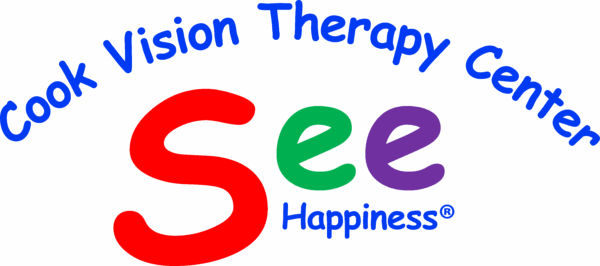Dyslexia
Dyslexia and Vision Therapy
A Comprehensive Approach to Learning Challenges
Dyslexia, a common learning disorder, affects millions of individuals worldwide, making reading, writing, and spelling challenging. Often misunderstood, dyslexia is not a reflection of intelligence but rather a specific difficulty in processing language. This condition can lead to frustration, low self-esteem, and academic struggles. However, innovative approaches like vision therapy have shown promise in alleviating some of the challenges associated with dyslexia.
Understanding Dyslexia
Dyslexia is primarily characterized by difficulties with accurate and fluent word recognition, poor spelling, and decoding abilities. These difficulties typically result from a deficit in the phonological component of language, which is often unexpected in relation to other cognitive abilities. Dyslexia can affect individuals differently, with symptoms ranging from mild to severe. Common signs include:
- Difficulty reading, especially out loud
- Problems with spelling
- Avoiding activities that involve reading
- Difficulty with rapid word retrieval
- Mispronouncing names or words
While dyslexia is a lifelong condition, early diagnosis and intervention can significantly improve outcomes. This is where vision therapy comes into play as part of a comprehensive treatment plan.
What is Vision Therapy?
Vision therapy is a personalized, non-invasive treatment program designed to improve visual skills and processing. It involves a series of exercises and activities tailored to the individual’s specific needs, often conducted under the supervision of an optometrist. The goal of vision therapy is to enhance the brain’s ability to control eye alignment, eye movements, focusing abilities, and eye coordination.
Common Visual Problems Associated with Dyslexia
While dyslexia is a language-based learning disorder, over 60% of individuals also struggle with visual processing issues that worsen reading and classroom performance. For Marietta, GA, students and adults, these overlapping challenges can hinder academic progress. Identifying these problems is the first step—vision therapy programs in Cobb County offer targeted strategies to improve visual skills, complementing traditional dyslexia interventions.
5 Visual Issues Affecting Dyslexia Management in Cobb County
-
Convergence Insufficiency: Struggling to coordinate both eyes when focusing on nearby text, leading to blurred or double vision—a common issue for students in Marietta schools.
-
Poor Eye Tracking: Difficulty smoothly moving eyes across a page, causing skipped lines and slow reading speed.
-
Visual Processing Deficits: Delays in recognizing letters/words, making reading feel overwhelming for Cobb County learners.
-
Accommodation Problems: Eye strain or headaches from shifting focus between whiteboards and desks in classrooms.
-
Binocular Vision Dysfunction: Eyes misaligning during reading, reducing comprehension, and causing fatigue.
While these visual challenges don’t cause dyslexia, they often intensify reading struggles for Marietta, GA, students. Customized vision therapy in Cobb County strengthens eye coordination, tracking, and processing—key skills for academic success.
Expert Insight: Targeted vision therapy can resolve 70% of binocular dysfunction cases, easing the burden on children with dyslexia.
How Vision Therapy Helps with Dyslexia
Research has shown that some individuals with dyslexia have co-occurring visual processing difficulties. These can include problems with binocular vision (eye teaming), visual tracking, and visual-motor integration. Vision therapy addresses these issues, thereby potentially reducing some of the obstacles faced by individuals with dyslexia.
- Improving Eye Teaming and Tracking
Many children with dyslexia struggle with eye teaming, the ability to coordinate both eyes to work together. Poor eye teaming can lead to difficulties in tracking words and lines of text, causing frequent loss of place while reading. Vision therapy exercises aim to improve eye teaming, making it easier for individuals to follow text smoothly and accurately.
- Enhancing Visual Processing Skills
Visual processing is how the brain interprets and makes sense of visual information. Dyslexia can sometimes involve deficits in this area, leading to difficulties in recognizing words and letters quickly and accurately. Vision therapy works on strengthening these skills through specific activities designed to improve visual perception and memory.
- Boosting Visual-Motor Integration
Visual-motor integration is the coordination of visual information with motor output, such as hand-eye coordination. Difficulties in this area can affect writing and copying tasks. Vision therapy includes exercises that enhance visual-motor integration, helping individuals improve their writing skills and overall coordination.
Case Studies and Evidence
Numerous case studies and anecdotal evidence suggest that vision therapy can be beneficial for children with dyslexia. For instance, children who underwent vision therapy showed marked improvements in reading fluency, comprehension, and overall academic performance. Parents and educators reported enhanced focus, reduced frustration, and increased confidence in these children.
A Holistic Approach
It is important to note that vision therapy is not a cure for dyslexia. However, it can be a valuable component of a holistic approach to managing the condition. Alongside vision therapy, interventions such as phonics-based reading programs, speech therapy, and occupational therapy can provide comprehensive support for individuals with dyslexia.
Conclusion
Dyslexia presents unique challenges, but with the right support and interventions, individuals can overcome these obstacles and achieve their full potential. Vision therapy offers a promising avenue for improving visual processing and related skills, thereby easing some of the difficulties associated with dyslexia. By incorporating vision therapy into a broader treatment plan, parents and educators can provide more effective and comprehensive support for those struggling with this learning disorder.
Understanding the multifaceted nature of dyslexia and addressing it through various therapeutic approaches, including vision therapy, can lead to better outcomes and brighter futures for those affected by this condition.
FAQs
-
Vision therapy is a program of eye exercises that improves visual skills like eye teaming and tracking. It helps with vision problems but does not cure dyslexia itself
Check Out Our Resources
Dr. Cook’s Publications:
- Authored books VISUAL FITNESS and WHEN YOUR CHILD STRUGGLES.
- Published articles in top optometric journals.
- His article “Eyesight, infinity and the human heart” was voted “Best Non-Technical Article” by the Association of Optometric Editors.





